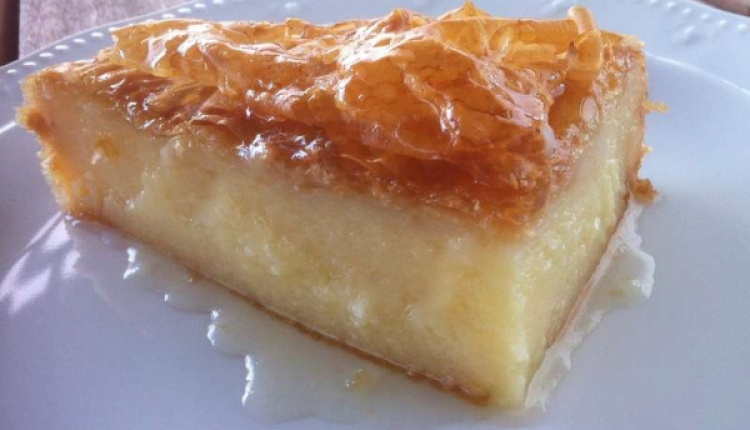Traditional Greek Galaktoboureko Recipe
- by XpatAthens
- Tuesday, 05 January 2016

Galaktoboureko is a traditional Greek dessert made with layers of golden brown crispy phyllo, sprinkled with melted butter, filled with the most creamy custard and bathed in scented syrup.. Simply amazing! This is a very easy to follow Galaktoboureko recipe for you to recreate this traditional sweet delight from scratch. After a lot of experimenting, My Greek Dish has distilled the essence of this delightful traditional Greek dish to a few easy to follow steps for you to make the very best Galaktoboureko on your first effort!
This easy to follow recipe can be summarised in three key stages:
1) Layering the phyllo sheets
2) Preparing the creamy custard filling
and
3) Preparing the scented syrup
The key for thee most flavourable Galaktoboureko is to use a good quality fresh butter to butter the phyllos sheets. The authentic Greek Galaktoboureko recipe calls for 'galaktos' butter - made from a mix of sheep's and cow's milk, but if you can't handle very strong flavour, then you can substitute with good quality fresh butter from cow's milk. When preparing phyllo based desserts, a little trick to make the phyllo crispier and flakier is to sprinkle the melted butter over the phyllo sheets, rather than brushing them. Working with phyllo can be trickey as it's brittle and can dry out very quickly, so check the handling tips before preparing.
Preparing the Galaktoboureko custard:
For the custard, all traditional Greek Galaktoboureko recipes use thin semilina, to achieve the characteristic grainy texture of the crea, which in this case is not considered a flaw. On the contrary, what is considered a flaw of this recipe is a very smooth, starchy and tight custard. In most recipes, the eggs are added whole towards the end, but with Galaktoboureko, the eggs are beaten into meringues and combined in the semolina based cream. This is the secret to a more fluffy and creamy custard and to avoid the egg-y semall, which can ruin the flavour of this dessert. Just be sure to add the semolina slowy to the warm milk to avoid it forming lumps!
To read more, please visit: My Greek Dish


